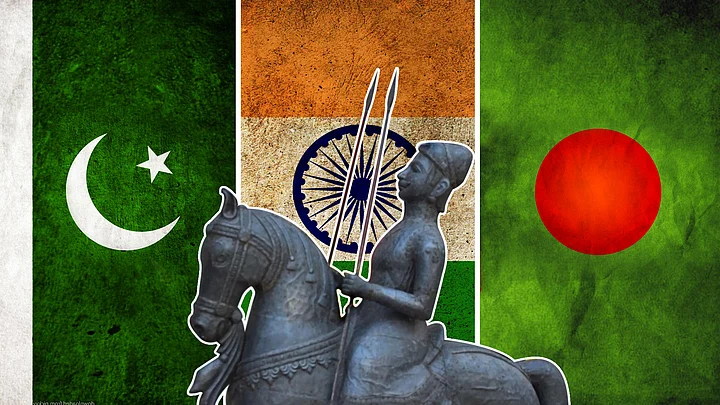India’s security situation was relatively quiet during 2015. The professional sceptics will, however, think otherwise looking over the ground realities. The fact is that no major communal riots took place and minor clashes were quickly stemmed, despite attempts by fringe communal elements and misguided intellectuals to raise passions.
Except for Chhattisgarh where Naxal violence registered an increase in killings and encounters, Bihar, Jharkhand, Odisha, Maharashtra and Andhra Pradesh contained Naxal assaults reasonably well. With the signing of Naga framework accord, all insurgent groups, barring S S Khaplang’s faction, opted to give peace and development a chance in Nagaland. In another significant development, Anup Chetia was repatriated, marking the beginning of a final solution to ULFA problem and Chhota Rajan was brought home, raising opportunities to bring his erstwhile associates to justice for their crimes.
Challenges on Security Front
- Signing of the Naga framework accord, an accomplishment for Centre as it gives peace and development a
chance
- ISIS succeeded in wooing a few youngsters but
they were either nabbed or rehabilitated due to the alertness of security
agencies
- Dialogue with Pakistan should be encouraged and
conscious effort should be made to shun usual rhetoric over Hafiz Saeed and
Dawood
- Covert ways of neutralising usual suspects need
to be discovered by police and intelligence agencies to protect national
security
Decline in Terrorist Incidents
India also remained largely unaffected by terrorist incidents. ISIS, the latest terrorist phenomenon, did succeed in wooing a few boys and girls but they were either nabbed or rehabilitated, thanks to the alertness of security agencies and open disapproval of ISIS ideology by Islamic scholars.
The security situation in Jammu and Kashmir neither deteriorated nor improved. The frequent raising of Pakistani and ISIS flags was intended more to irritate the establishment than to escalate separatism. In an effective reversal of combat strategy, infiltrating and home grown terrorists were taken head on and ceasefire violations met with punitive fury. Realising perhaps the futility of political and military grandstanding on Kashmir and terrorism, leaders of both countries have finally decided to talk.
Engaging with Pakistan
It will be a remarkable feat if the comfort level of the current security situation is sustained during the coming year. Managing Pakistan will of course be a key factor. The strategy for this should be simple. Deal with infiltrating terrorists and ceasefire violations strongly and do not allow military preparedness and vigilance by intelligence agencies be constrained by PM Narendra Modi’s forthcoming talks with his counterpart in Islamabad. However, chest thumping statements should be avoided and rhetoric over trying Hafiz Saeed and seeking Dawood’s repatriation should sound less shrill to give both leaders a chance to engage in constructive dialogue.
We must understand that only time can settle the Kashmir issue by converting the LoC into an international border. Till that happens, Delhi should be content with adding teeth to India’s deterrence lest Kargil repeats and task agencies to keep undertaking covert actions relentlessly for making it difficult for ISI, LeT and their likes to operate in India.
Enhanced Surveillance
The Chinese are unlikely to trigger a clash along our northern borders but will certainly patrol aggressively and routinely announce their territorial claim on Arunachal Pradesh. The current impasse in friendly relations with Nepal should look up, given our historical engagement. Hopefully, we would have learnt by now that machismo has no place in dealing with your neighbours.
The present regime in Bangladesh is friendly but has little control over the use of its soil by the ISI, Jamaat and now, ISIS to groom and infiltrate terrorists in India. Our security forces will thus have to tighten their surveillance along the border, shunning their complacence and lure for easy money.
Threat from Radicalisation
It will also be critical to expose prospective ISIS recruits before they get radicalised to operate as volunteers of organised terrorist groups. Since it may be politically incorrect to watch all usual suspects because of our exaggerated sense of fair play, police and intelligence agencies will have to discover covert ways of neutralising them, balancing their actions between their duty to protect national security and profess secularism.
It seems fairly certain that Naxalites’ operating area will squeeze further, following clarity in government’s strategy that calls for meeting Naxal violence with force and ensuring rehabilitation of those who are willing to return to the mainstream.
With elections in West Bengal, UP and Assam looming, communal tension is expected but if the recent past is any guide, it will not be allowed to turn into a major conflagration. There will of course be talk of building Ram Mandir in Ayodhya, followed by impassioned claims and counter claims but with BJP in power in Delhi, the situation will never go out of hand.
Knowing our propensity to be in the limelight for the wrong reasons, the issue of who is morally, politically, religiously and socially correct will continue to be debated fiercely but won’t succeed in its objective of either threatening social harmony or stalling economic progress mainly because of their minuscule size.
Overall, the security scenario both inside and around India does not auger doom. The key that it must not be allowed to deteriorate, however, lies in our willingness to respond to security challenges sans hypocrisy.
(The writer is a former Special Secretary, Cabinet Secretariat)
(At The Quint, we question everything. Play an active role in shaping our journalism by becoming a member today.)
